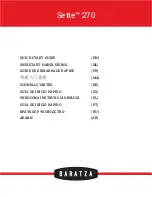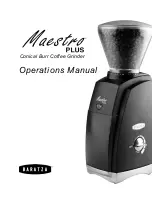
33
6. Commissioning
6.
Commissioning
6.1
Digital inductive tach/hour meter
6.1.1 Operation
Display standard mode:
To view stored max. RPM.
Fig. 28: Operating hours (left) and revolutions
per minute (right)
–
When the engine is not running, the tach/hour meter
displays the actual number of operating hours.
–
When the engine is running, the tach/hour meter dis-
plays the actual RPM of the engine.
1. Press button 2x.
The display shows “2 RPM” and the max. RPM stored.
Fig. 29: Max. RPM stored
If no button is pushed for around 8 seconds, the
display automatically switches back to standard
mode.
















































